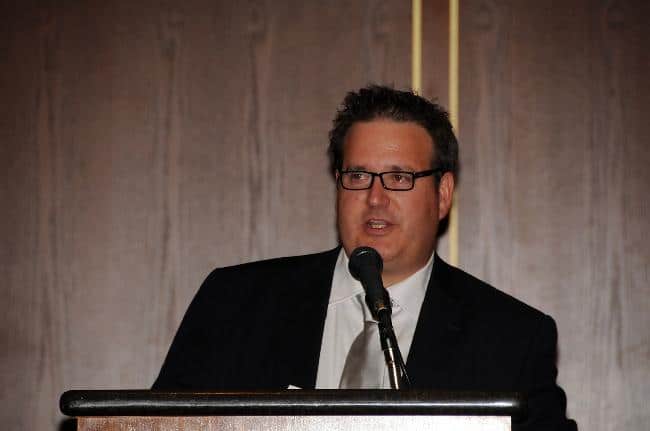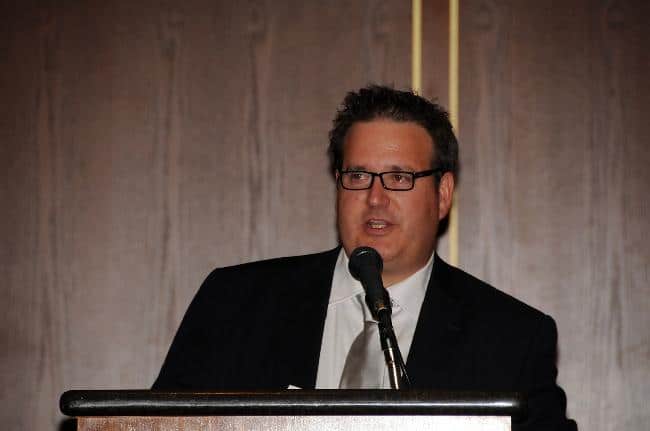
 Calgary’s Jim Letourneau is a geologist and investor with an eye for technology. As publisher and editor of Jim Letourneau’s Big Picture Speculator, Jim is as likely to comment on his favorite new iPad app as he is on the price of copper. Letourneau’s unique vantage point led him to Edmonton’s Wavefront Technologies (TSXV:WEE), a company that combines his passions and, he thinks, may offer an opportunity for investors.
Calgary’s Jim Letourneau is a geologist and investor with an eye for technology. As publisher and editor of Jim Letourneau’s Big Picture Speculator, Jim is as likely to comment on his favorite new iPad app as he is on the price of copper. Letourneau’s unique vantage point led him to Edmonton’s Wavefront Technologies (TSXV:WEE), a company that combines his passions and, he thinks, may offer an opportunity for investors.
The 1964 Alaskan earthquake, also known as the Great Alaskan Earthquake, lasted just five minutes. Ground fissures, collapsing buildings and resulting tsunamis contributed to a staggering death toll of 131 people, some as far away as California and Oregon. Fifty-five homes were washed away in Port Alberni, BC when a tsunami traveled through a fjord from the west coast of Vancouver Island. Measured in today’s dollars, property damage was more than (US) $2 billion. It was the most powerful recorded earthquake in North American history.
The ramifications and lessons of that event were massive and, perhaps of little solace to those lost in the quake, extended to the field of geology. Geologists had long known that earthquakes created changes in subsurface fluids such as water, oil and gas. But after the 1964 Alaska earthquake, water well levels were off the charts; a well in South Dakota temporarily fluctuated by 7 metres. A well in Florida by 6 meters. Seismological effects on oil production have also been documented around the world in places as diverse as Kern County, California and the Black Sea region. In most cases, well pressures increased and production increased for durations lasting from less than a month to 3 years immediately after an earthquake.
Edmonton’s Wavefront Technology Services (WEE.V) is company that is taking physics to the oil patch and turning the field of reservoir engineering on its head. Wavefront researchers managed to figure out the physics that caused these fluid changes and more importantly, how to apply the now patented process to the injection of fluids for enhanced oil recovery (EOR) and groundwater clean up.
Wavefront’s Powerwave (oil field) and Primawave (groundwater) processes create waveforms that allow higher volumes of liquid to be injected into the ground. The technologies are a big improvement, environmentally; the injected fluids migrate more uniformly which increases their ability to flush out trapped oil or groundwater contaminants.
Implementation of Powerwave technology in injection wells normally results in a 40% injectivity index increase to as high as 9 times. The injectivity index tracks the the volume of injected water at a given injection pressure. Too high of an injection pressure can create fracturing which is detrimental to waterflooding. Increased water injection rates are not beneficial if there is poor conformance. If the water channels from injector to producer it bypasses the oil (or contaminant) reducing the overall recovery factor. Field results from Powerwave implementations show increased oil/water ratios over time.
Wavefront has been making great strides in the environmental market as well. According to Vice President Patrick Hicks, “Primawave and the associated Hornet tool represent the first truly new innovative technology for the delivery of treatment fluids in the environmental sector in the past ten years.” Recently, a Primawave injection scheme used in a brownfields cleanup project resulted in a cost savings of $175,000 (or 40%) to the client. There is no shortage of environmentally contaminated sites that will benefit from these cost savings.
Powerwave is used as an addition to pre-existing waterfloods, implementing Powerwave recovers additional reserves (ie more than would be recovered by water flooding alone) and allows them to produced more quickly. EOR is a critical component of energy supply. Currently about 2/3rds of the world’s discovered oil is still stuck in the ground. Powerwave’s technology will make extracting the next 1/3 a straightforward exercise.
It is still very early days for Wavefront but the company has matured from 3 installed systems in 1997 to over 100 today. As of the the nine month period ended May 31, 2010 service revenue and royalties of $1,571,411 were more than double compared to the $711,967 from the previous nine month period. Wavefront’s business model is to create a recurring revenue stream by licensing its technology to end users. In licensing the technology, the Corporation provides end users a Powerwave or Primawave system to carry out the licensed process. The pricing of Powerwave licenses is variable depending on order size and but are estimated to range between $3000- $5000/month. There are approximately 200,000 fluid injection wells in North America alone. At a 5% market penetration (10,000 systems) assuming discounted pricing of $3000/month, Wavefront’s revenue stream would be a compelling $360 million per year. Through that lens, Wavefront’s stated goal of becoming a billion dollar company is a matter of when, not if. With a market cap that ranges from $100-$200 million depending on the mood of the market, Wavefront offers patient investors considerable upside.
One of the greatest challenges of early stage technology companies in any industry is keeping money in the till. Wavefront’s last financing of $21.9 million will meet their capital requirements for the next 2 years and the company is projected to be revenue positive within that time frame.
Jim Letourneau offers a free trial subscription Big Picture Speculator here.
Why Subscribe?
Jim Letourneau’s first Big Picture Speculator newsletter featured uranium stocks while uranium was selling for less than $12/lb (as of January 2007 it is $75/lb). Since then he has regularly exposed readers to “under the radar” opportunities that provided multi-fold gains.
The Big Picture Speculator is an educational newsletter that encourages readers to think for themselves and become better speculators. Jim scours the investment universe for strong market sectors and then features individual companies within these sectors based on:
* Technical Analysis
* “Smart Money” participation
* Comparative reserve/resource evaluations
* Breakthrough products/processes
* “Follow on” companies that offer products/services to companies in strong sectors
Leave a Reply
You must be logged in to post a comment.





 Share
Share Tweet
Tweet Share
Share




Comment